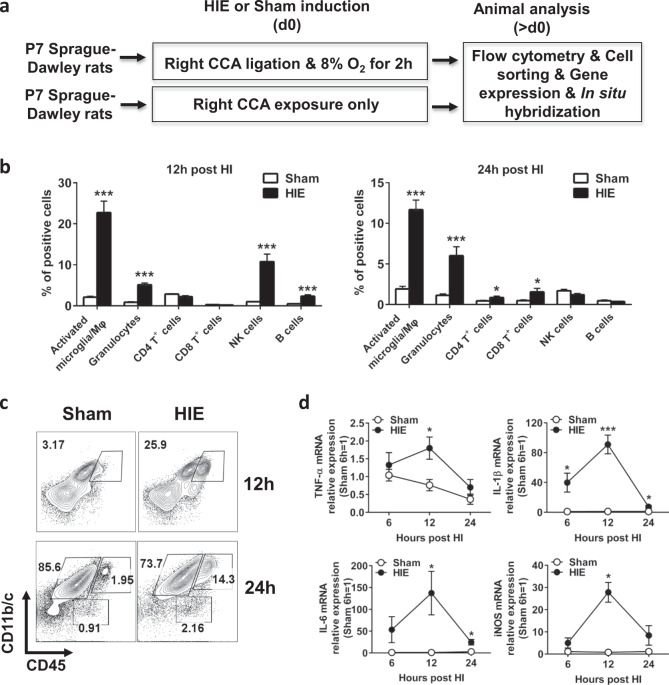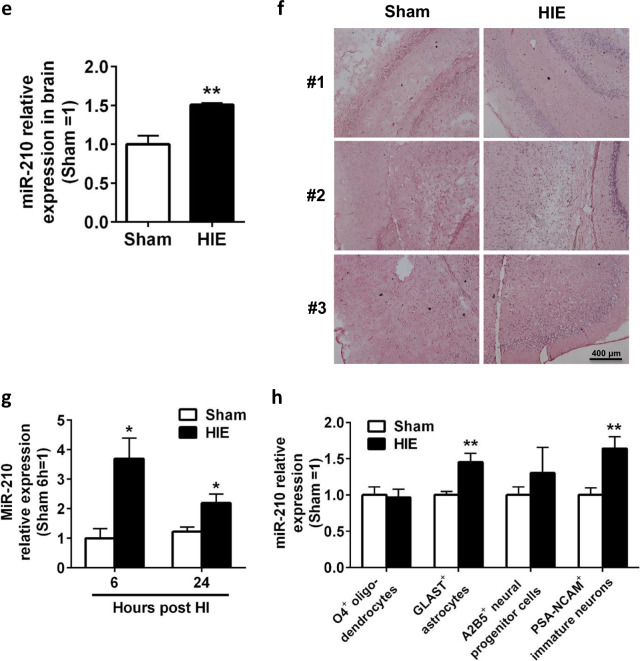Fig. 1.
MiR-210 is upregulated in activated microglia in HIE. The experiments were repeated three times. Representative results are presented. a Schematic representation of the experimental design to induce sham and HIE in P7 Sprague-Dawley rat pups. b Bar graph showing the FACS quantitative analysis of the various populations of immune cells in ipsilateral hemisphere harvested from sham or HIE animals at the indicated time points post-HIE induction. Data are presented as the mean ± SEM (n = 7–8). c Representative FACS plots showing the staining for CD11b/c and CD45 in mononuclear cells isolated from the ipsilateral hemisphere of sham or HIE animals at the indicated time points post-HIE induction. d Dot plots showing the RT-qPCR analysis of proinflammatory molecules in the ipsilateral hemisphere harvested from sham or HIE animals at the indicated time points post-HIE induction. Data are presented as the mean ± SEM (n = 5). e Bar graphs showing the qPCR analysis of global miR-210 expression in the ipsilateral hemisphere of sham or HIE animals. Data are presented as the mean ± SEM (n = 4). f Representative images showing the in situ hybridization staining of brain sections of sham or 12 h HIE animals (n = 3). Scale bar: 400 μm. g Bar graphs showing the qPCR analysis of miR-210 expression in microglia sorted from the ipsilateral hemisphere of sham or HIE animals at the indicated time points post-HIE induction. Data are presented as the mean ± SEM (n = 5). h Bar graphs showing the qPCR analysis of miR-210 expression in other neural cells sorted from the ipsilateral hemisphere of sham or HIE animals at 6 h post-HIE induction. Data are presented as the mean ± SEM (n = 6). *P < 0.05, **P < 0.01, ***P < 0.001


